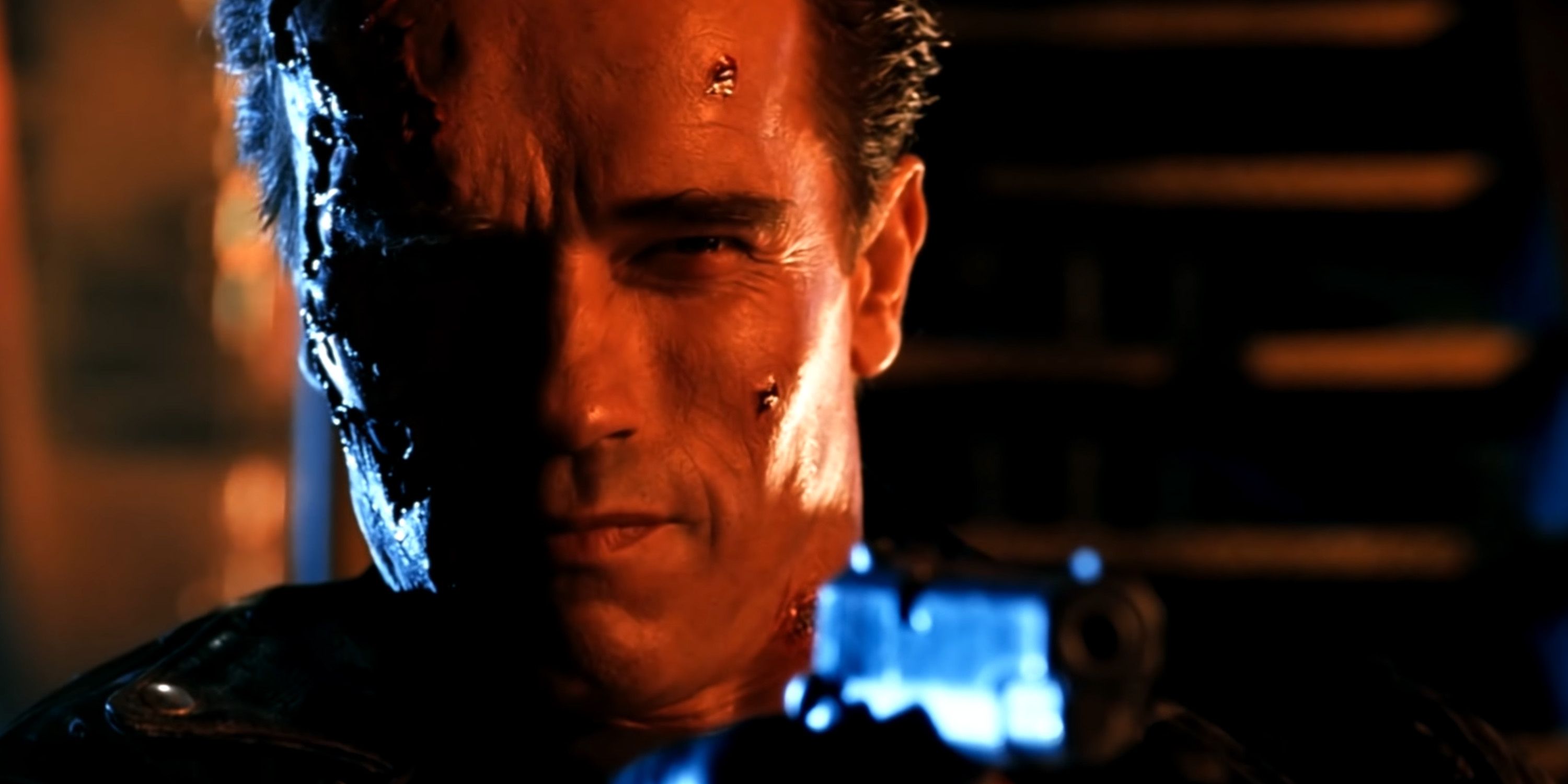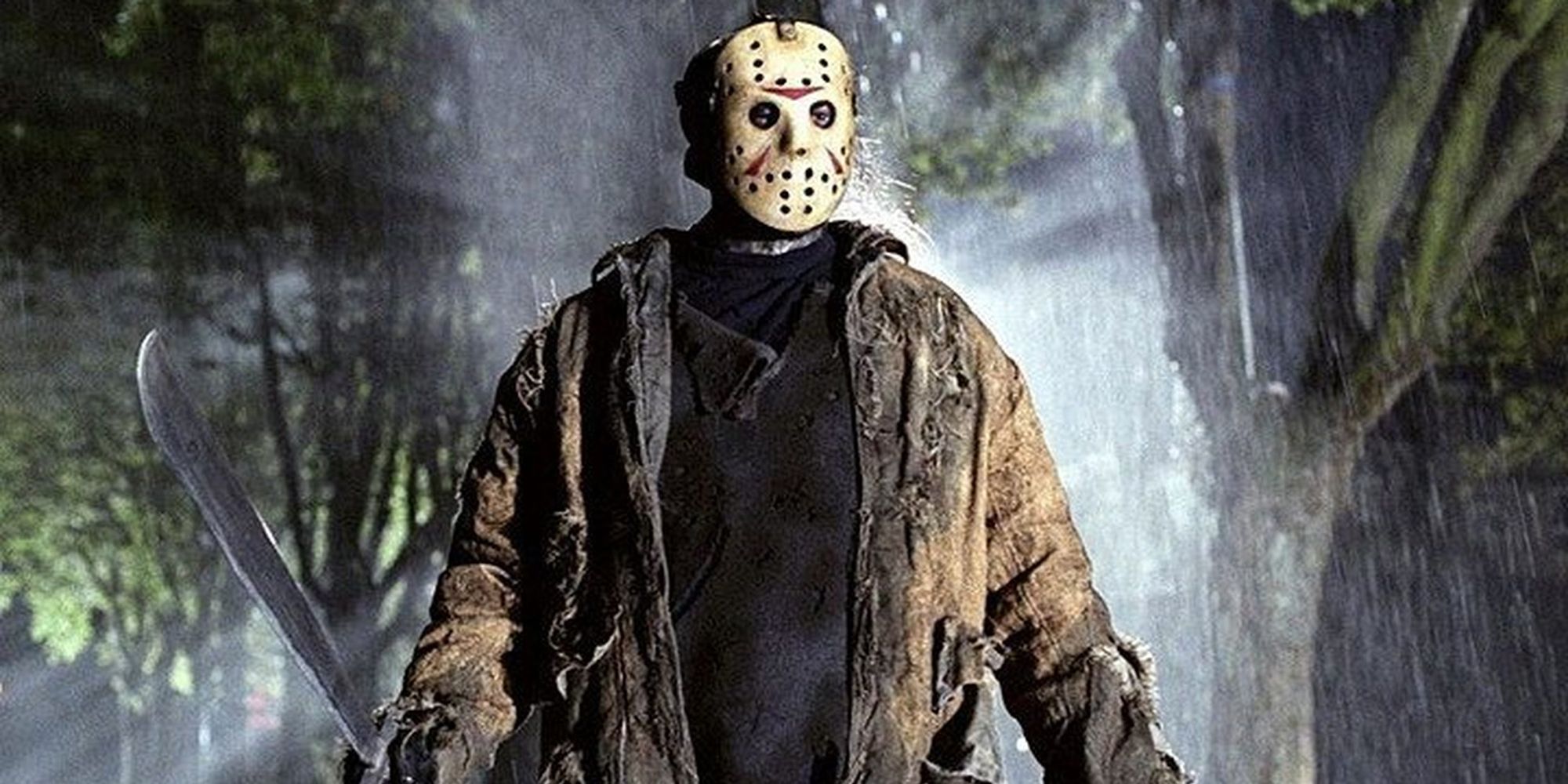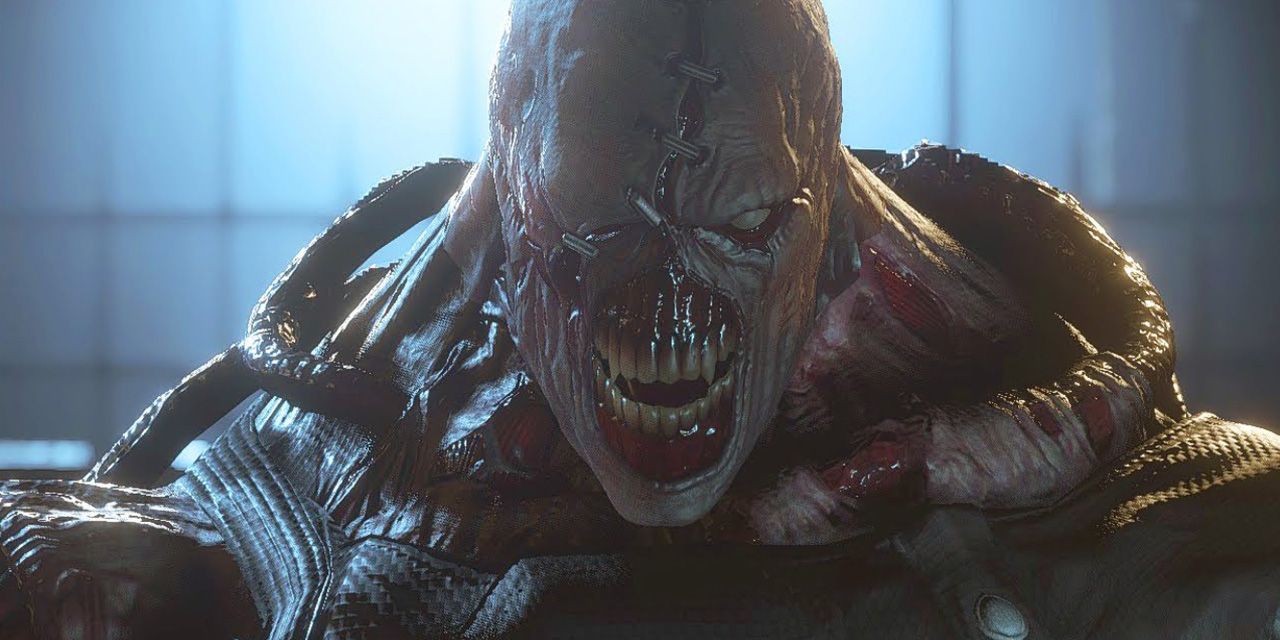Horror often provides a scenario in which the main characters can fight back. Resorting to violence could be the only way to survive the situation. Some horror stories feature an antagonist that just won't die. They can't be defeated, they can barely be slowed down, and if anyone does manage to kill them, they'll be back. They're the Implacable Man, and they're everywhere.
When most people picture the default horror story, being chased is probably central to that image. Horror stories often have to walk a fine line between making their antagonists threatening, while still leaving some explanation as to why the hero is still alive. A being whose defining trait is their ability to take any punishment and keep coming is a perfect way to keep the stakes high 24/7.
The Implacable Man, which is just as often not a man, is a being that is indefatigable in the single-minded pursuit of their goal. In horror, that goal is almost always murder. They can't be killed, either because they're functionally immortal or because they're just too good at violence. They can't be reasoned with, either because they're absolutely 100% committed or because they don't have the necessary facilities to understand logic. The Implacable Man tends to be empowered by magical or scientific enhancement, making them invulnerable enough to shrug off most harm. In the cases that they're entirely grounded, they're simply a being of sheer will who won't give up regardless of circumstance. If there's a way to kill them, it's almost always the MacGuffin of the narrative. They may die, but they'll always be back. It's a simple concept, but horror creators over the generations have come up with infinite new directions.
Since the idea of a character that simply can't be stopped is so straightforward, it should be no surprise that writers have been using it for generations. Before it became a frequent feature of horror, it was a common trope among fantasy writers. Countless characters in the realm of religion or mythology could earn the term. Arguably the first example of the trope in literature belongs to Edmund Spenser's 1596 poem, The Faerie Queene. In the fifth book, Spenser introduces a medieval robot named Talus, who alongside the knight Artegall. Artegall is a pure arbiter of justice, while Talus is a ruthless enforcer who unquestioningly and unstoppably acts out his commands. Artegall points out an injustice and Talus uses his flail to set it right as violently as possible. He's basically Robocop for an earlier age.
Almost every slasher villain is an Implacable Man by necessity. They pursue their target eternally, stopping only to kill whoever gets in their way. Jason, Michael, Freddy, Leatherface, and every other major slasher villain has died several times. They return for the next sequel if they're not already back by the end credits scene. This concept extends beyond slashers, however. The Xenomorphs from the Alien franchise are essentially weaponized insects who can't be killed with traditional weaponry. They're downgraded to enemy hoards for the sequel, but the first one may as well be immortal. The eponymous It of It Follows fame is a perfect example. It just pursues its target unfailingly until it gets what it wants, and there's nothing that can be done to stop it. It's very rare to see an Implacable Man in a heroic role, but John Wick is a pretty good example. Since the films shoot him like a horror antagonist, he feels just as immortal as Jason or the Xenomorph.
As is often the case, interactive media has made this concept far more engaging. There's a long and masterful tradition of invincible enemies that pursue the player while they try to complete the game's tasks. In a way, every protagonist is Implacable, as they respawn every time they're killed and continue the mission regardless of the game's obstacles. The first example was Bezerk. This 1980 arcade game featured Evil Otto, a bouncing smiley face who can phase through walls and survive anything the player throws at him. He's designed to speed up the game and kill players who are doing too well.
The Sinistar from Sinistar has the same goal, but he's much more intimidating in design. The first game to ever use stereo sound put that technology to work to give their Implacable antagonist a threatening voice. Flash forward 20 years and Nintendo introduced the SAX from Metroid Fusion. This parasite dons Samus' armor and hunts her down without fail until you confront it and reveal its horrific true form. The perfected modern version of this trope comes in the Resident Evil 2 and 3 remakes. Mr. X in the former and Nemesis in the latter are flawless Implacable Men, who pursue the player without fail, can't be easily slowed, and can become the biggest threat in the room at any time.
The Implacable Man is a simple concept that can fill almost any role. An unstoppable arbiter of justice, an endless monster who'll never stop seeking death, or a hero who won't give up his quest for revenge could all fit into the trope. A trope about characters who simply can't be stopped should never stay out of pop culture for long. Even when we least expect it, they'll always come back.



